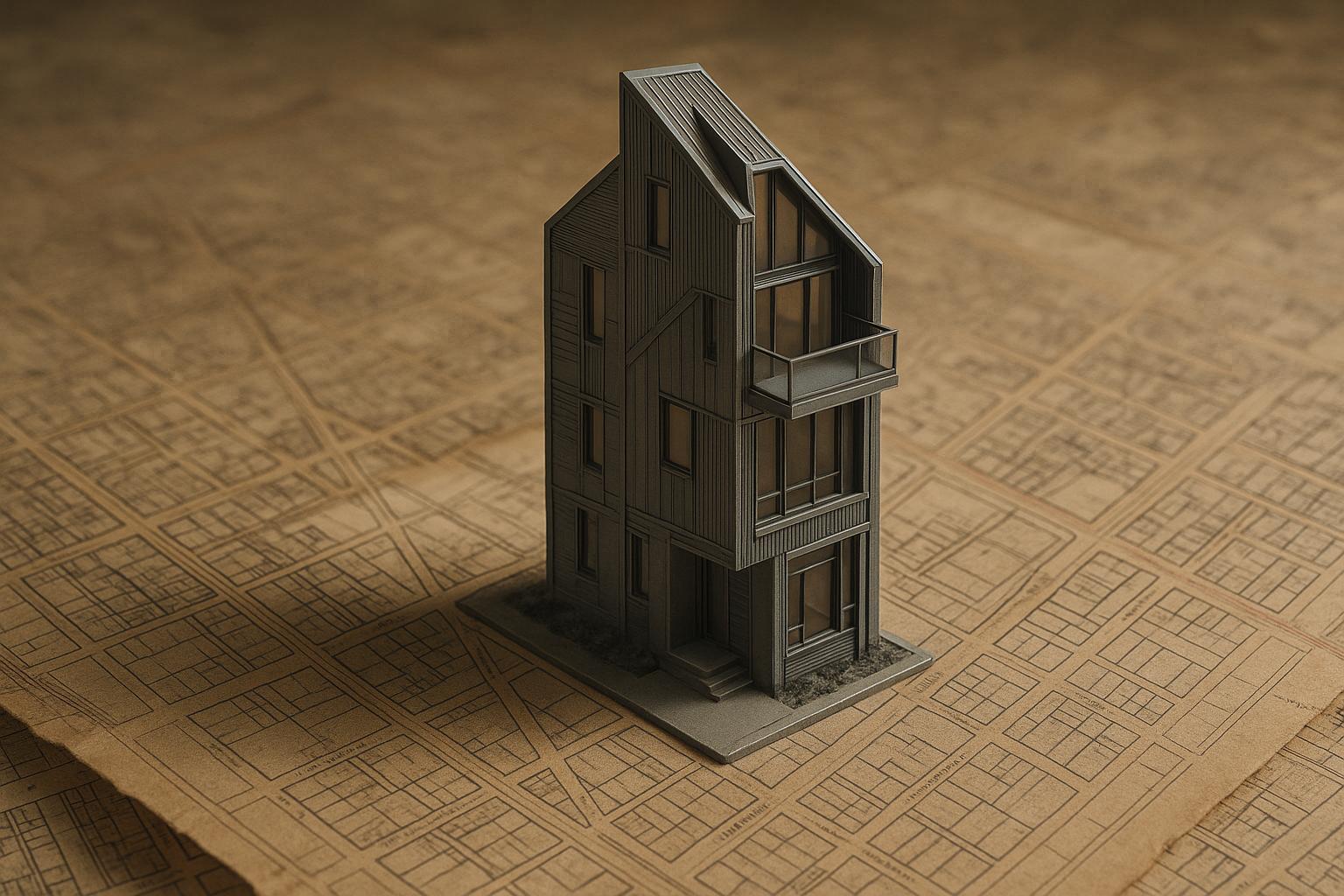In the face of burgeoning urban density and limited available space, architects around the world are finding innovative ways to transform vacant infill plots into distinctive, functional homes. These projects showcase a variety of approaches that either harmonise with or boldly contrast the existing streetscapes, reflecting the unique histories and design languages of their locales.
In East London, the Spruce House by local studio Ao-ft exemplifies a successful blend of tradition and sustainability. Constructed from Cross Laminated Timber (CLT), this new-build home and self-contained design studio fits seamlessly into its terraced surroundings. Its design draws inspiration from the area's past as a village high street, with a façade reminiscent of a shop front, featuring vertical timber battens and mullions that provide both a sense of privacy and visual interest. The project prioritises wellbeing with natural materials and strong connections to the garden at the rear, earning recognition including the RIBA National Award and the Wood Award in the Private Sector.
Meanwhile, in Ghent, Belgium, the Glass Brick House by Delmulle Delmulle Architecten navigates the challenges of a fully enclosed, limited urban site with a progressive construction method involving solid wood and a double façade system. This terraced house cleverly balances heritage and modernity, employing glass brickwork on the street-facing upper façade to maximise natural light while maintaining privacy. Its design references traditional local architecture with window mouldings that echo the historic stepped-gable houses nearby. The interior layout places bedrooms on the ground floor behind a terracotta-tiled façade and situates the living areas above, optimising spatial quality despite the constrained plot.
In Wisconsin, the Curtain House by Johnsen Schmaling Architects takes a more contemporary stance within a conventional neighbourhood. Departing from the pitched roofs of neighbouring homes, this infill house adopts a rectangular form fronted with wood and metal louvres, built to match the height of century-old adjacent properties. This reimagining of infill convention highlights how new architecture can challenge expectations while respecting urban scale and context.
Similarly, in Dublin, Gró Works designed an infill house that reflects its industrial and Victorian red-brick surroundings. The use of red brick paired with perforated metal panels creates an industrial aesthetic that dialogues with both the ornate terraces and the stark utilitarian backstreets. Thoughtful spatial planning includes a sheltered porch between the street and entrance, bedrooms on the ground level, and an upper open-plan living area with an outdoor balcony, exemplifying how infill homes can offer modern comforts while harmonising with historic environments.
In Monterrey, Mexico, Casa Ederlezi from Práctica Arquitectura occupies a narrow five-metre-wide plot, comprising two red concrete volumes separated by a central courtyard. Designed to prioritise privacy, the home closes off views to its surroundings but uses internal outdoor spaces to foster openness within the compact footprint.
London’s NW10 House by Platform 5 Architects addresses a challenging triangular corner site, formerly a builder’s yard. The home’s irregular, blocky form responds to the plot’s spatial constraints and sightlines, with rooms arranged around a central skylit spiral staircase. Interiors reveal exposed concrete surfaces, emphasising a raw, minimalist aesthetic aligned with the building’s adaptive reuse heritage.
In Hanoi, Vietnamese studio ODDO Architects created TH House within a narrow four-by-six-metre site, flanked on three sides by neighbours and separated from the opposite property by a slim alley. The design maximises daylight through strategically placed lightwells, perforated walls, and a glazed façade that extends slightly beyond interior spaces, highlighting innovative methods to cultivate light and ventilation in restrictive urban sites.
Lastly, Buenos Aires’ Casa Vedia by BHY Arquitectos tackles the constraints of party walls by incorporating two courtyards and patios to enhance light and space. The three-storey white building features a double-sloped roof, reducing its visual mass to better integrate with the residential context.
Collectively, these infill houses underscore the potential of small, vacant city plots to be transformed into thoughtfully designed homes that respect their environments while introducing architectural innovation. They exemplify a growing trend towards sustainable, efficient, and contextually sensitive urban housing solutions that navigate spatial restrictions with creativity and respect for local character.
📌 Reference Map:
- Paragraph 1 – [1]
- Paragraph 2 – [1], [2]
- Paragraph 3 – [1], [3], [4], [5], [6], [7]
- Paragraph 4 – [1]
- Paragraph 5 – [1]
- Paragraph 6 – [1]
- Paragraph 7 – [1]
- Paragraph 8 – [1]
Source: Noah Wire Services
